
views
X
Trustworthy Source
Cleveland Clinic
Educational website from one of the world's leading hospitals
Go to source
There are no serious side effects of dry-brushing besides skin irritation, so if you want to try it for yourself, then it’s easy to get started.
The Right Technique
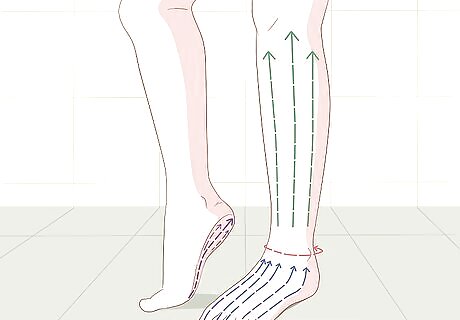
Brush up your shins and thighs starting from your ankles. It's best to start low on your body to stimulate circulation in your lymphatic system. Place the brush on the front of your leg over your ankle. Then brush up your shin to your knee. Repeat this on your calf and switch to the other leg. Then start at your knees and brush up to your hip. Repeat this on the front and back of each leg. Professionals recommend rubbing each area 7 times for a full treatment. Use long, smooth strokes and don’t press too hard. If you feel irritation, try lightening the pressure.
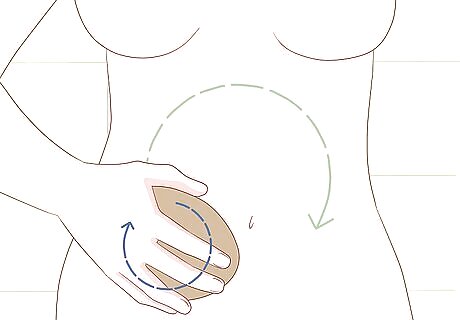
Rub with a circular motion around your groin and stomach. Hold the brush on your lower abdomen near your pubic bone. Brush in a smooth, circular motion 7 times. Then brush in a circular motion around your stomach. You can brush clockwise or counterclockwise—just stick with a single direction. The skin on your stomach tends to be a little more sensitive than in other places, so you might want to use less pressure here.
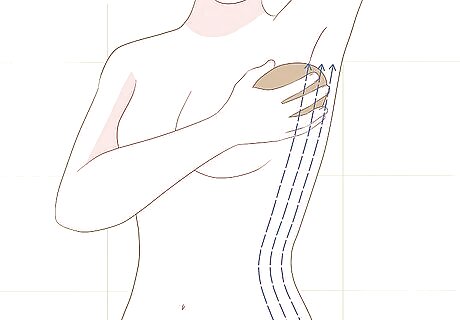
Brush up each side of your ribcage. It's easy to forget about your sides, but there are a lot of lymph nodes concentrated in these areas. Start at either one of your hips and brush up into your armpit 7 times. Switch sides to do the other side of your ribcage.
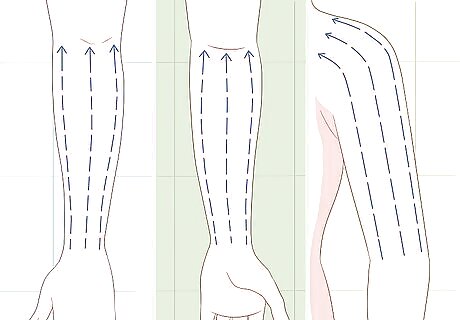
Run the brush along the insides and outsides of your arms. It's possible for some lymphatic fluid to pool in your arms, so make sure you stimulate circulation here as well. Start down on the outside of your wrist and brush up to your elbow. Repeat this for the inside of your lower arm. Then go from your elbow to your shoulder before covering your other arm. You can also rub each side of your hand with a circular motion for exfoliation. The skin on the inside of your arms tends to be sensitive too, so you might want to lighten the pressure.
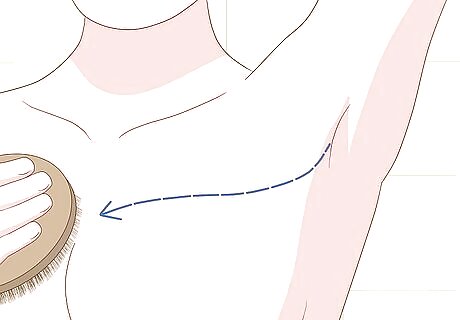
Slide the brush in from your armpits across your chest. Hold the brush in your armpit and slide it smoothly across your chest towards your heart 7 times. Then switch sides and repeat that motion. Some practitioners also recommend brushing your armpit in a circular motion as well, since there is a heavy concentration of lymph nodes here. If you want to brush your armpits, do this before brushing your chest. Loop the brush under your breasts toward your heart if you have breasts. The skin around here is sensitive and might get irritated from the brushing.
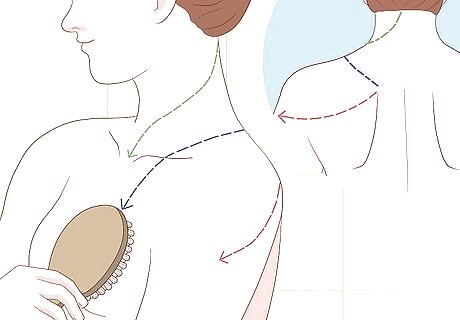
Brush your neck and upper back over your shoulders toward your chest. Start by brushing your upper back up towards your shoulders. You won’t be able to reach all the way down, but do the best you can. Then brush from the base of your skull down your neck. Roll the brush over your shoulders on each side around to your chest. This might be a little tough to reach, so using a brush with a longer handle will help a lot.
Tips for the Best Results

Get a long-handled brush with natural, stiff bristles. You can use a standard shower or bath brush for dry-brushing. The best type is a stiff, natural-bristled one. Synthetic bristles could irritate your skin. Also, get a brush with a long handle so you can reach your back and legs easily. Stiff bristles are best, but if your skin is sensitive, then you can use a softer type as well.
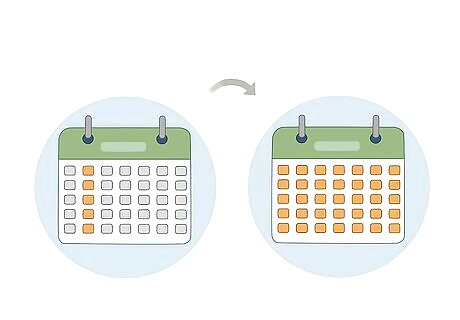
Introduce yourself to dry brushing by doing it a few days per week. Generally, doctors recommend dry-brushing every day to see results. However, this might be a little harsh on your skin when you’re just starting. Start slowly by brushing on a few days per week instead to make sure your skin can tolerate the brushing, then increase it to every day.
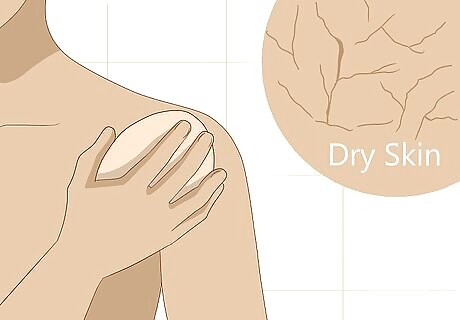
Do your brushing routine on dry skin. As the name implies, dry-brushing should be done on dry skin. This helps you exfoliate your skin and boost circulation without pulling moisture out. Some professionals recommend dry-brushing in the shower or bathtub with the water off. This way, the tub will catch any dead skin cells that flake off.
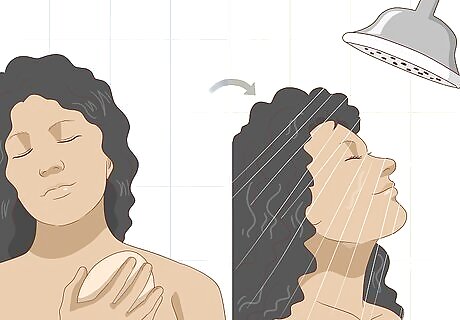
Shower or bathe after you dry-brush. Dry-brushing could cause some flaking skin, so it’s best to take a shower or bath after your routine. This gets rid of any dead skin cells and refreshes your skin. If your skin feels dry, then be sure to moisturize after showering. Dry-brushing could cause some dryness and irritation.
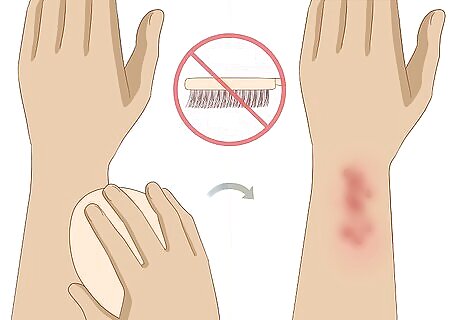
Stop brushing an area if your skin is getting irritated. While brushing about 7 times on each spot is recommended, it’s always possible that your skin can get irritated before that. If your skin looks pink or you’re feeling uncomfortable, then move on to the next spot. If your skin often gets too irritated while you’re brushing, then you might be pressing too hard. Lighten up your grip to see if that helps. If lightening your grip doesn’t help, then your skin might be too sensitive for dry-brushing. Talk to a dermatologist for more options.

Avoid brushing on irritated or cut areas. Doctors do not recommend dry-brushing on damaged skin. If you have any burns, cuts, rashes, or irritations, then avoid brushing these areas. Also don't brush over varicose veins. If you have a skin condition like psoriasis, then ask your dermatologist before trying dry-brushing. This might not be right for you.


















Comments
0 comment